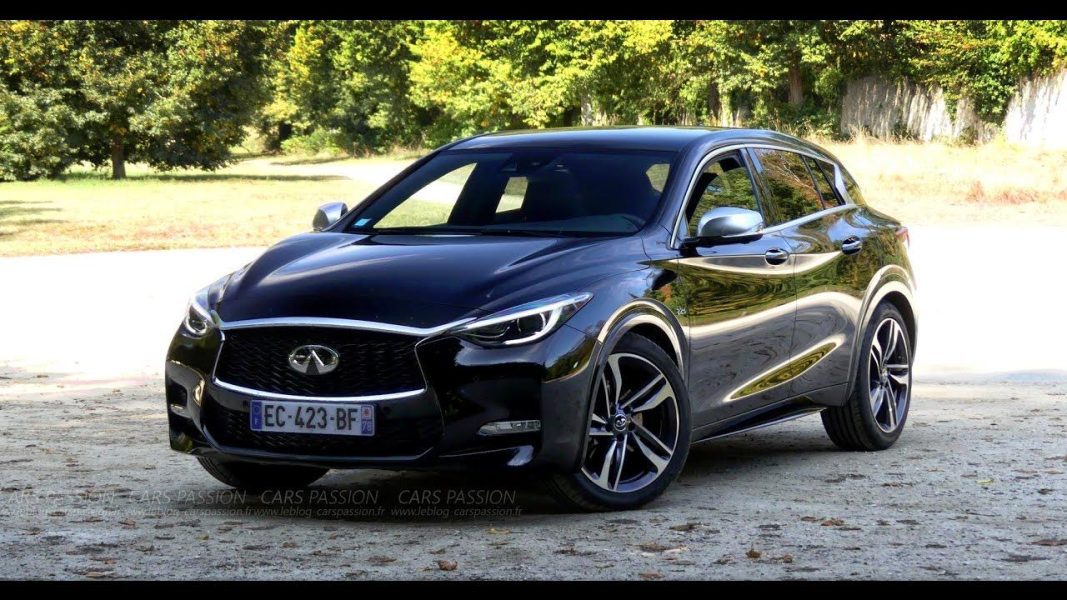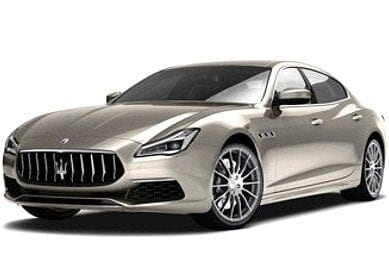
Infiniti Q30 Sport Premium diesel 2017 review
Content
- Is there anything interesting about its design? 7/10
- How practical is the interior space? 7/10
- Does it represent good value for money? What functions does it have? 7/10
- What are the main characteristics of the engine and transmission? 7/10
- How much fuel does it consume? 7/10
- What is it like to drive? 7/10
- What safety equipment is installed? What is the safety rating? 8/10
- How much does it cost to own? What kind of guarantee is provided? 7/10
- Verdict
- Click here for more pricing and specifications for the 2016 Infiniti Q30 Sport Premium.
- Is the Infiniti Q30 Sport Premium your luxury hatchback? Let us know what you think in the comments below.
Peter Anderson drives an Infiniti hatchback based on a Renault-powered Mercedes-Benz. His road test and review of the new Infiniti Q30 Sport diesel engine includes performance, fuel consumption and a verdict.
Infiniti Q30 is already a premium hatchback under a different name - Mercedes A-Class. You probably can't tell by looking at it, and Infiniti sure hopes you don't. It's an interesting move from Infiniti, who are keen not to produce another German car.
MORE: Read the full 30 Infiniti Q2017 review.
Premium hatches are important to luxury manufacturers - they attract new, hopefully younger players, surprise them with luxury, and then hope to sell them more profitable metal in the future. It worked for BMW (series 1), Audi (A3 and now A1) and Mercedes-Benz (class A). So the question you have to ask is - is using a donor car from one of your competitors a good way to attract new buyers?
| Infiniti Q30 2017: Sport Premium 2.0T | |
|---|---|
| Safety Rating | |
| engine's type | 2.0 L turbo |
| fuel type | Premium unleaded gasoline |
| Fuel efficiency | 6.3l / 100km |
| Landing | 5 Places |
| Price from | $25,200 |
Is there anything interesting about its design? 7/10
It's a difficult question. Outwardly, it is completely different from the car on which it is based, with a completely individual appearance. The only problem is that, especially from the front, people mistake it for a Mazda. It's not bad (Mazda looks great), but it's probably not what Infiniti needs.
Those layman aside, the Q30's styling was generally well received by all who saw it, even in the garish rose gold (Liquid Copper) finish. The big wheels help, and those strong body creases make it unique among premium hatchbacks.
Inside, a pleasant feeling - cozy, but not crowded.
Inside you can feel the origin of the car. There are many parts from Mercedes, including most of the switchgear, but the dashboard design has been updated. Infiniti's interior designers have thankfully steered clear of the cheaper, metallic look that pollutes some As and CLA models. The top of the dash is made to order by Infiniti, with a separate screen replaced by an integrated touchpad and Infiniti's own 7.0-inch screen, and a rotary dial sound and navigation system.
There is a nice feeling in the cabin - cozy but not cramped, nice materials everywhere, and the right decision was made to replace the gear lever with a cantilever. The wrong decision was made (although it's unlikely there was an alternative) to hold on to the Merc universal indicator/headlights/wiper switch.
How practical is the interior space? 7/10
The Q30 is a small car, but you can fit a surprising amount of stuff in it. The luggage compartment is a reasonable 430 liters, which compares favorably with some cars that are one size larger. You'll find handy cup holders front and back, four in total, and bottle holders in the front doors hold 500 ml of Coca-Cola, but a bottle of wine will last the friendship.
The front seats, designed using Infiniti's "zero-gravity" concept, are surprisingly comfortable and, at first glance, might not seem from Mercedes. The rear seats are also quite comfortable, although the average passenger will disagree. Rear legroom is cramped, but even with the huge sunroof, there's plenty of headroom front and rear. However, rear-seat passengers can feel claustrophobic thanks to the rising glass line and the falling roofline.
Does it represent good value for money? What functions does it have? 7/10
The Q30 is the first non-Japanese Infiniti and is built at Nissan's Sunderland plant in the UK. It offers three trim levels - GT, Sport and Sport Premium.
You can choose from three engines - GT-only 1.6-liter turbocharged four-cylinder petrol engine, 2.0-liter turbocharged four-cylinder petrol engine and 2.2-liter turbodiesel (not available for GT). Prices start at $38,900 for 1.6 GT and go up to $54,900 for the car we had, the 2.2 Diesel Sport Premium.
Standard equipment includes a 10-speaker Bose audio system with active noise cancellation (optional on GT and Sports), 19-inch alloy wheels, dual-zone climate control, front and rear parking sensors, rearview camera, front and side cameras, keyless entry, a comprehensive safety package, electric front seats with three memory settings, a panoramic glass roof, satellite navigation, adaptive LED headlights, automatic headlights and wipers, automatic parking, active cruise control and Nappa leather interior.
The 7.0-inch screen is mounted on the dashboard and runs on Nissan software and hardware. The sound quality of the Bose speakers is good, but the software is deeply mediocre. The Mercedes COMAND isn't much better, but when you're competing against BMW's iDrive and Audi's MMI, screaming about your technical capabilities, it's a little annoying. The lack of Apple CarPlay/Android Auto exacerbates this, especially considering it's available on two of the three German competitors.
What are the main characteristics of the engine and transmission? 7/10
The 2.2-litre turbodiesel, sourced from Renault's corporate cousin, develops 125kW/350Nm of power to propel the 1521kg Q30 to 0kph in 100 seconds (petrol takes a tonne in 8.3 seconds). Power is sent to the front wheels via a seven-speed dual-clutch transmission.
For driving, a rather aggressive stop-start system is provided to help reduce fuel consumption.
How much fuel does it consume? 7/10
Infiniti claims 5.3L/100km on the combined cycle, while we found it to be 7.8L/100km, although it was used almost exclusively in the suburbs and during peak hours in Sydney.
What is it like to drive? 7/10
Like the exterior design, the Q30 has its own character behind the wheel. The 2.2-litre turbodiesel is a great engine, pairing well with the seven-speed dual-clutch transmission. Sleek and strong, it feels faster than the advertised 0-100 mph figure and you barely hear it inside. The only real key to his oil burning job is a low redline.
It takes a lot of effort to get the Q30 off balance.
On a cruise and around the city, it is equally quiet and calm car. Despite those huge wheels, road noise is minimal (there's active noise cancellation) and, equally impressive, the big hoops didn't seem to ruin the ride quality.
It takes a lot of effort to upset the Q30, and the front end is delightfully pointed, while well-weighted steering helps make it nimble and positive.
As a sporty hatchback, it's a good balance, and with the ability to fit a decent amount of luggage and people of normal height in the back, it can happily serve as a family car.
Warranty and safety rating
Basic Warranty
4 years / 100,000 km
guarantee
ANCAP Safety Rating
What safety equipment is installed? What is the safety rating? 8/10
Active and passive safety features include seven airbags (including knee airbags), ABS, stability and traction control, front and rear parking sensors, rear view camera, forward collision warning, automatic emergency braking, two ISOFIX points, brake force distribution, bonnet pedestrian protection and lane departure warning.
In August 30, Q2016 was awarded five ANCAP stars, the highest available.
How much does it cost to own? What kind of guarantee is provided? 7/10
Infiniti offers a four year 100,000 km warranty and four years of roadside assistance. Scheduled maintenance plan that covers the first three years or 75,000 612 km at a price of $2.2 for a 25,000-liter diesel. This includes three scheduled services and an official dealer visit queue every 12 miles or XNUMX months, whichever comes first.
There are not that many Infiniti dealers, so any potential buyer should take this into account.
Verdict
Australian car buyers have long since given up scoffing at posh sunroofs, so the Q30 could be the car that finally fires the local market's imagination. The rest of Infiniti's lineup is an odd mix of SUVs (one cute but old, the other clunky and nasty), a midsize sedan with an odd choice of tech (Q50) and big coupes and sedan no one seems to care. about.
It took a while, but Infiniti finally released a car that I think people might be interested in. Pricing is aggressive, when you bother to read the spec, it's usefully large and different enough from the A-Class that most people won't notice the link. There is also a QX30 compact SUV version if you have more money to spend.
And that's Infiniti's plan to make you think they've done something else. Maybe it should be a little different, but if it's part of a smarter strategy for the brand, it might work.
Click here for more pricing and specifications for the 2016 Infiniti Q30 Sport Premium.
Is the Infiniti Q30 Sport Premium your luxury hatchback? Let us know what you think in the comments below.
